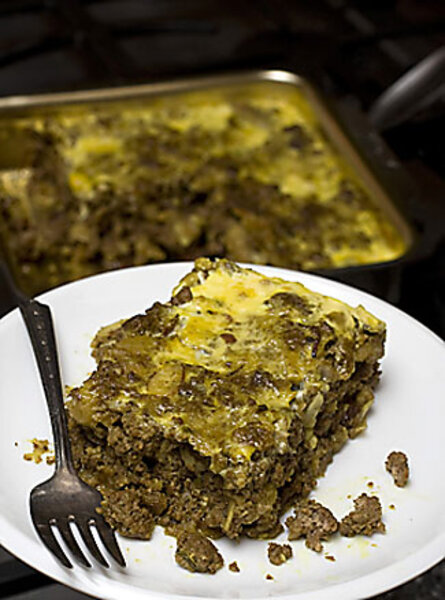A tasty reminder of home
AS A YOUNG 20-SOMETHING, I always wanted to cook dinner from scratch but rarely had the time. In fact, one night while in graduate school, my roommate and I went to heat up a frozen pizza only to realize the stove wasn't connected – and we had been living in that apartment for almost nine months. In our rush to get out the door or finish homework, we had patched together a routine that completely omitted the oven – subsisting on cans of soup, carryout, and microwave meals.
A few years later, I turned the stove on more regularly to cook pasta sauces and omelets, but I was hardly an expert cook by the time I got married. So you can imagine my angst when, just days after our honeymoon, my budding culinary skills were put to the test after my new mother-in-law asked: "What's for dinner?"
I had married a South African and his family had flown to the US for our wedding. My mother-in-law was staying with us for two weeks. I hadn't visited my husband's native country yet, so in an attempt to embrace my new family and its traditions I suggested a South African dish. I was secretly hoping the response might be "Let's braai!" A braai is the South African version of a barbecue – and I figured I could handle slapping meat on the grill. But with the weather turning cooler, we craved comfort food. My husband pulled out an old recipe his sister had given him. "What about bobotie?" he suggested. Pronounced ba-boor-tea, it's a casserole fancy enough for a Sunday dinner. I decided to try it.
My mother-in-law explained that bobotie was originally an Indonesian dish brought over by slaves from that country. In the 17th century, Dutch sailors working for the Dutch East India Company would stop to rest at the Cape of Good Hope on their spice route to and from the East. They left slaves from Malaysia, Indonesia, and East Africa to work in the kitchens of the Dutch who were stationed there. These slaves later became known as the Cape Malay.
In South Africa today, bobotie is a common dish with many variations. Key ingredients include curry, dried fruit or raisins, ground meat, nuts, and an egg/milk mixture poured on top. It's served with rice, chutney, and bananas.
So on that night, I rolled up my sleeves and dived into a different culture. First, I sautéed chopped onion until it turned golden. Then I whisked together turmeric, curry, and apricot jam and blended it with ground beef and diced apples. I folded in roasted almonds and raisins.
As I browned this meat-spice mixture, our kitchen filled with the sweet and savory scents of a faraway country, a new family, and the spirit of adventure.
Because I hadn't visited South Africa, this dish was my first palatable introduction to my husband's world.
Although it took me longer than usual to make dinner, the bobotie was a success, measured by requests for seconds. Making it from scratch ushered in a new era of cooking for me and also made me comfortable with curry.
Since then, we've adapted the recipe by adding more spices and almonds, and using yellow saffron rice when we can find it.
I've been to South Africa twice since first making that dish. And now, despite the tremendous problems the country faces, a warm plate of bobotie brings to mind its more pleasant aspects: elephants, giraffes, and leopards roaming across a panoramic countryside; the way the South African sunshine makes yellows brighter, whites crisper, and blues deeper; an African mother's intricate beadwork strung together with hope for a better future; and a vivid memory of two girls – one black and one white – holding hands and twirling at Cape Town's Fish Hoek Beach.
My husband recalls eating bobotie at celebratory dinners with his family. And now that we have our own children, we've made it one of our mealtime traditions. When the weather is cold and we long for the warmth of the South African sun, we invite my American family over, pile our plates full of that richly scented curried meat, and talk to the children about the country where their dad was born. Although we travel to South Africa only every couple of years, cooking bobotie makes us feel closer to family members who live so faraway.





